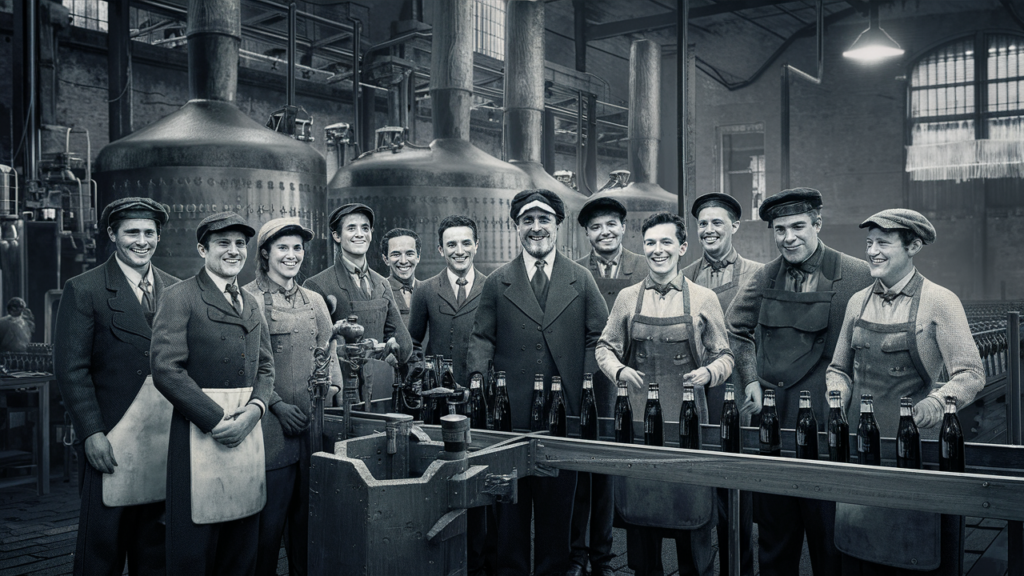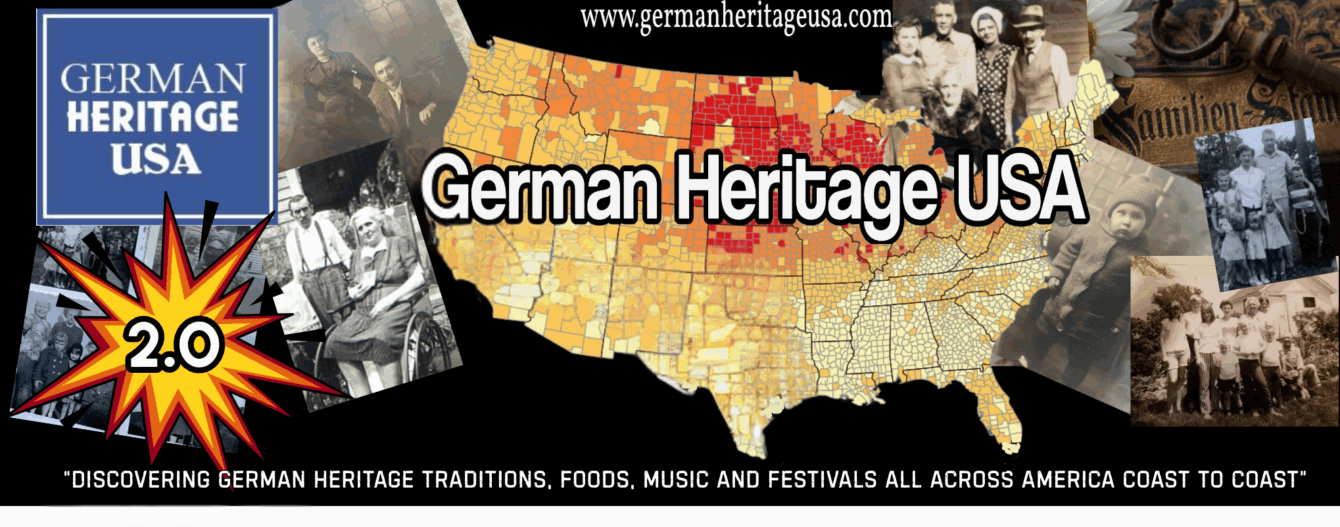From Humble Brewers to Beer Barons: The German Brewmasters Who Shaped American Beer
GERMAN HERITAGE USA | AFFILIATE DISCLAIMER: This post may or may not contain affiliate links which means we may receive a commission for purchases made through links. We will only recommend products that we have personally used or that we truly trust. Learn more on our Private Policy and Disclaimer Page located under our Terms Of Service tab above.
The story of American beer is deeply intertwined with the story of German immigrants. In the mid-19th century, a wave of Germans arrived in the United States, bringing with them their love for a crisp, refreshing beverage called lager.

German Bier Barons of America
These skilled brewers, later dubbed “Beer Barons,” not only revolutionized the American beer industry but also left an indelible mark on the nation’s social and cultural landscape.
German Roots:
Brewing in Germany has a long and rich history dating back centuries. Monasteries were often the centers of brewing innovation, and by the 16th century, lager beers, brewed with bottom-fermenting yeast at cooler temperatures, became popular. These lagers were smoother and crisper than traditional ales, making them perfect for warmer climates.
Brewing Boom in America:
German immigrants faced many challenges upon arriving in America. Discrimination and competition were rampant, but their brewing skills offered a valuable opportunity.

Starting in the 1840s, German brewers began opening small breweries in major cities like Milwaukee, Chicago, and St. Louis. By the 1880’s, like many factory building, the brewery buildings grew in both size and production too. These breweries catered to the growing German immigrant population, but their delicious lagers soon attracted a wider audience.
Rise of the Barons:
While many German brewers operated small, local businesses, some rose to become industry giants. These individuals, later known as the “Beer Barons,” combined their brewing expertise with shrewd business acumen to build vast brewing empires.
Top 10 German Beer Barons Who Shaped American Brewing
The 19th century saw a wave of German immigration to the USA, and with them came a love for their national beverage – beer. These enterprising individuals weren’t just content to enjoy their favorite drink; they revolutionized the American brewing landscape. Here are 10 German Beer Barons who left their mark:
- Gottlieb Heileman (Old Style Beer): Arriving in Wisconsin in 1858, Heileman established the Heileman Brewing Company. Their flagship brand, Old Style Lager, became a Chicago favorite known for its smooth taste and affordability.
- Adolph Coors (Rocky Mountain Spring Water): In 1873, Coors set up shop in Golden, Colorado, capitalizing on the pure, cold Rocky Mountain spring water for his brews. This unique water source is still a key ingredient in Coors beers today.
- Frederick Pabst (Pabst Blue Ribbon): Pabst wasn’t the original owner of the now-iconic Pabst Blue Ribbon, but he brought it national fame. He shrewdly marketed the beer as a premium import during the early 1900s, despite it being brewed in the US. This strategy cemented Pabst Blue Ribbon’s image as a high-quality beer.

The story of Pabst Blue Ribbon’s iconic blue ribbon isn’t quite as straightforward as it seems. While the beer did eventually win a blue ribbon at the 1893 World’s Columbian Exposition in Chicago, Pabst’s genius lay in creating the association well before that. Decades earlier, Pabst’s predecessor, the Best Select beer, had racked up numerous awards. To celebrate these victories, Pabst began tying actual blue silk ribbons around the necks of the bottles in the 1880s. This clever marketing trick turned the ribbon into a symbol of quality, prompting customers to seek out “the beer with the blue ribbon.” By the time Pabst secured the actual blue ribbon at the Exposition, the beer was already well on its way to becoming synonymous with excellence. - Frederick & Jacob Best (Pabst Brewing Company): These brothers from Germany co-founded the Best Brewery in Milwaukee in 1840. Their focus on quality lagers quickly gained popularity, laying the groundwork for what would become Pabst Brewing Company after they sold their stake.
- Eberhard Anheuser & Adolphus Busch (Anheuser-Busch): This partnership is legendary. Anheuser, a German brewer, established a brewery in St. Louis. Busch, his savvy son-in-law, revolutionized marketing and distribution, propelling Anheuser-Busch to become one of the biggest breweries in the world.
- George Ehret (Hell Gate Brewery): Nicknamed the “German Beer Baron of New York,” Ehret built Hell Gate Brewery into a New York City powerhouse. He was a pioneer in refrigeration technology, ensuring his beer stayed fresh during hot summers.
- Jacob Ruppert (Ruppert Brewery & New York Yankees): Ruppert’s brewery was another New York success story. He cleverly used his brewing profits to purchase the New York Yankees in 1915. The money helped build Yankee Stadium and hire legendary players like Babe Ruth, forever linking his name to American sports history.
- Christian Moerlein (Moerlein Brewing Company): Moerlein’s brewery in Cincinnati was a major player in the 19th century. His focus on German-style lagers and innovative marketing techniques made him a force to be reckoned with.
- Joseph Schlitz (Schlitz Brewing Company): Schlitz, another Milwaukee brewer, rose to prominence in the late 1800s. Their emphasis on quality control and a catchy slogan, “The Beer That Made Milwaukee Famous,” solidified their place in American brewing history.
- Bernhard Stroh (Stroh Brewery Company): Stroh’s story takes a unique turn. During Prohibition, when brewing beer was illegal, Stroh’s cleverly pivoted to producing ice cream. This diversification allowed them to stay afloat and return to brewing after Prohibition ended.
These German Beer Barons, along with many others, not only brought their brewing expertise to America but also revolutionized the industry with innovation, marketing savvy, and a passion for quality beer. Their legacy continues to be enjoyed by beer lovers across the nation today.
- Other notable names: Valentin Blatz, George Ehret, Jacob Ruppert, all contributed significantly to the industry’s growth and diversification.
Beyond Beer:
The Beer Barons’ impact extended far beyond beer itself. They created jobs, fueled urban growth, and contributed to American philanthropy.

Many built community centers, sponsored cultural events, and even funded educational institutions. Notably, Jacob Ruppert, owner of the New York Yankees, used his beer profits to build Yankee Stadium and helped popularize baseball.
Challenges and Legacy:
While the Beer Barons brought immense success to the American beer industry, their path wasn’t without obstacles. The rise of Prohibition, and changing consumer preferences posed significant challenges.
Nevertheless, their pioneering spirit and commitment to quality laid the foundation for the diverse and vibrant American craft beer scene we enjoy today.
